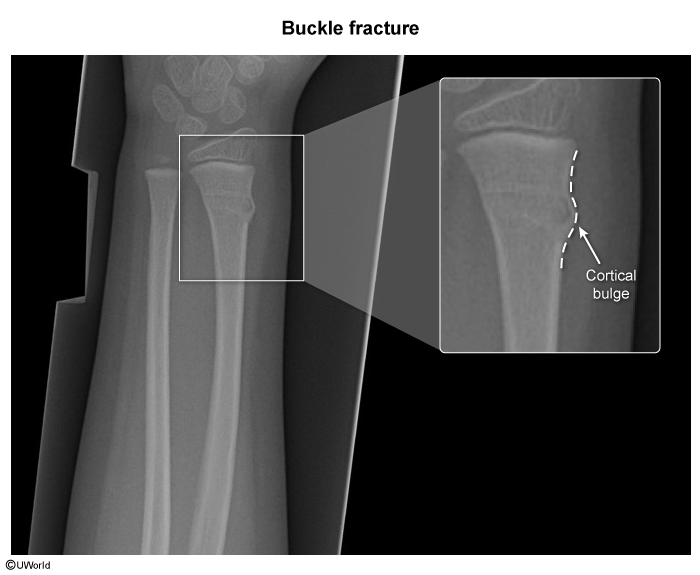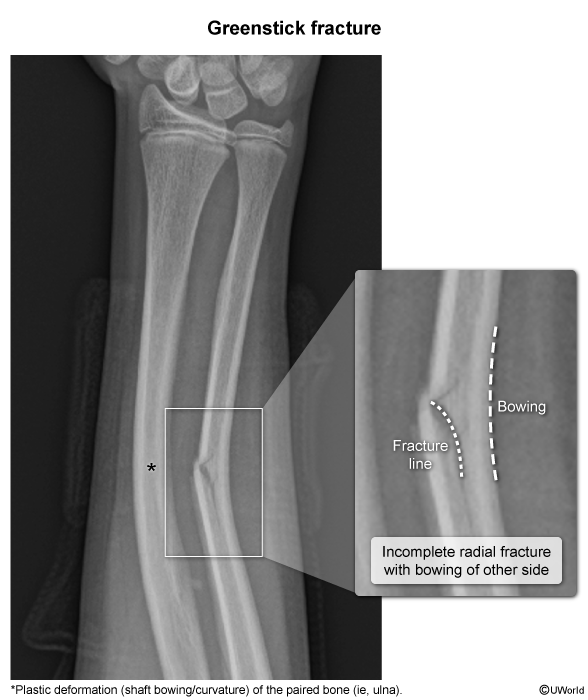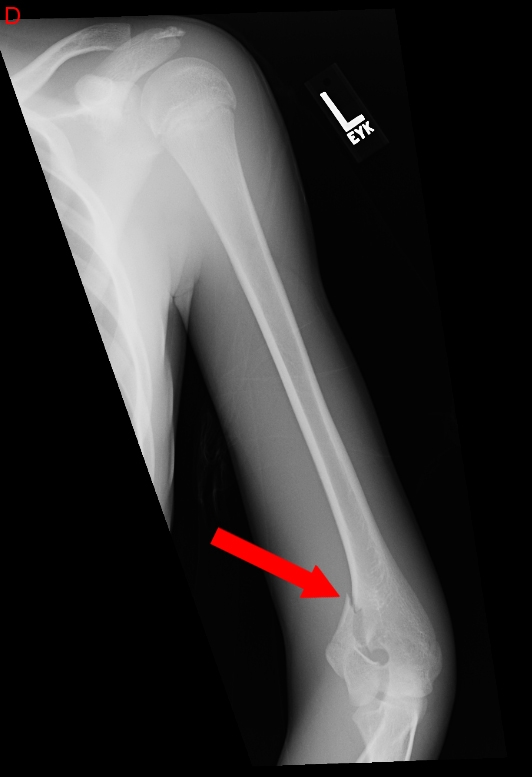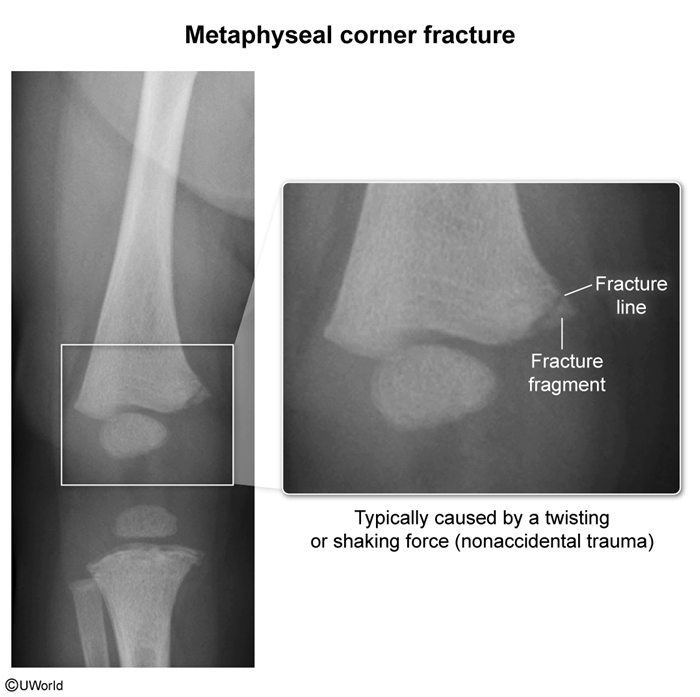Fracture Patterns In Children
Article Sections
Introduction
Pediatric bony architecture differs from that of adults due to the presence of a more porous (ie, more flexible) cortex, a stronger periosteum (ie, less likely to be displaced), and cartilaginous growth plates. These features predispose children to unique fracture types, including incomplete fractures (eg, buckle, greenstick) and growth plate fractures. Other fracture patterns unique to children include nonaccidental trauma (NAT)-related fractures (eg, metaphyseal corner fracture, rib fracture), which must be differentiated from accidental injury.
Buckle (torus) fracture
Buckle fractures occur due to a sudden, longitudinal force applied to a bone. Young children (age <10) have porous bone, which allows for compression of the distal metaphyseal cortex with an axial load. This most frequently occurs with a fall onto an outstretched hand and involves the distal radius and/or ulna. The
Continue Learning with UWorld
Get the full Fracture Patterns In Children article plus rich visuals, real-world cases, and in-depth insights from medical experts, all available through the UWorld Medical Library.
Figures
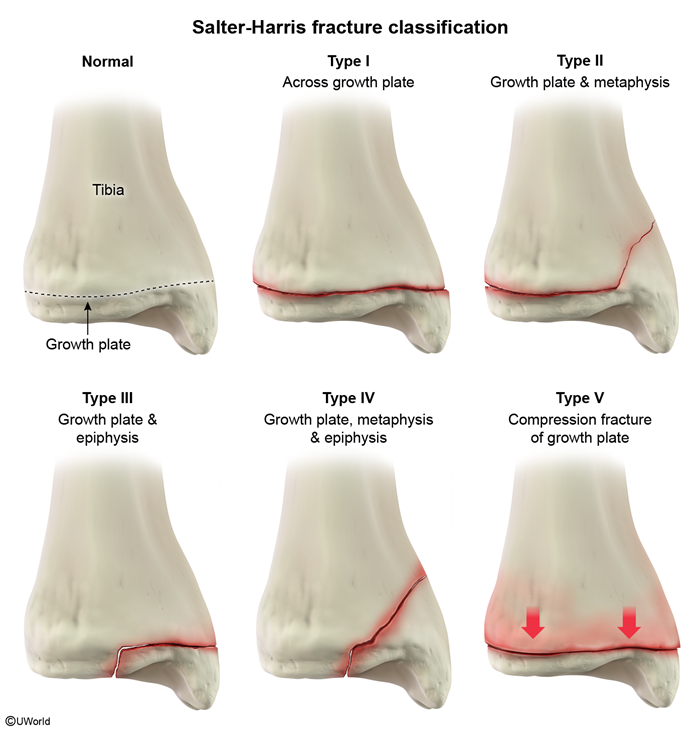
Images
